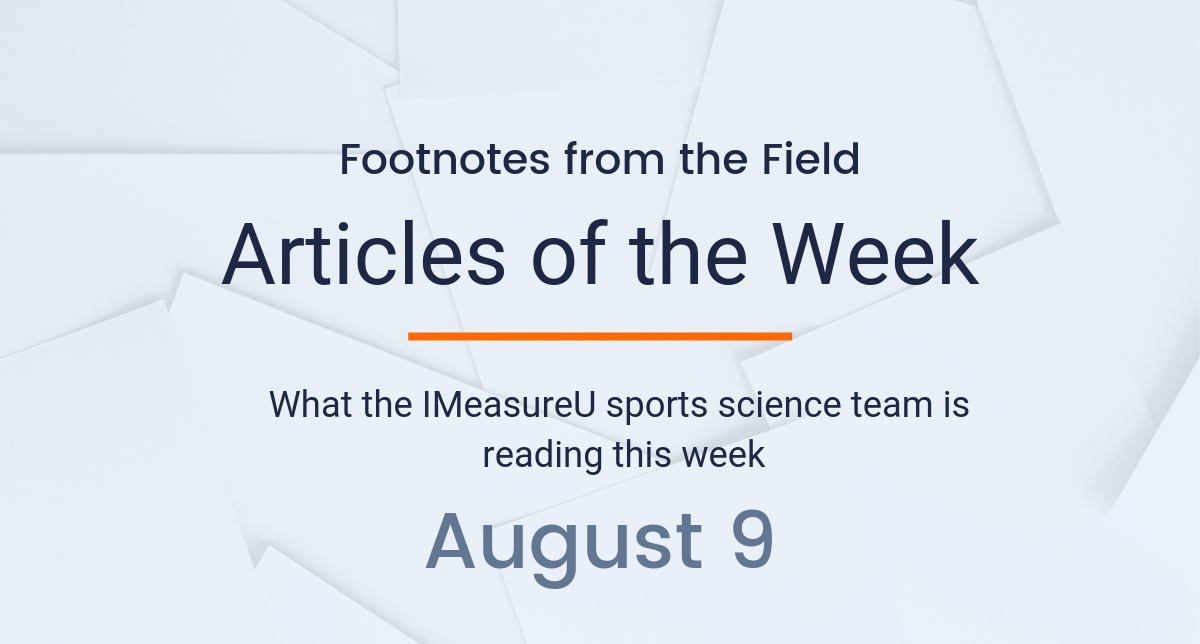
Here’s what the sports science team at IMeasureU is reading this week:
The first article from this edition of the articles of the week comes from Martin Buchheit on the Sports Performance & Science Reports website. Buchheit offer some guidelines that coaches and practitioners can use to appropriately program high speed running and mechanical work sequences in relation to technical training contents and match schedules. Concluding remarks highlight that while the monitoring of high speed running (HSR) and mechanical work (MW) during matches and training sessions with appropriate technology (i.e., tracking systems is important, the anticipation and understanding of the HSR and MW demands of the various HIIT Types and formats available is vital for selecting the most appropriate puzzle piece and its programming.
The next article comes from author Jose Delgado in the Journal of Strength and Conditioning Research. This paper compared muscle activities of vastus lateralis (VL), biceps femoris (BF), and gluteus maximus (GM) during the back squat (SQ), Romanian deadlift (RDL), and barbell hip thrust (BHT) exercises performed with the same load (60 kg) and at one repetition maximum (1RM). The results suggest that the RDL was equally as effective as the BHT for isolating the hip extensors.
This article in the European Journal of Sports Science by author Krutsch Werner and colleagues investigates media-derived ACL data which hopes to provide information about professional football over 10 years. Conclusions in this paper suggest that there is often a decrease in playing level after 3 years which illustrates the serious consequences of ACL ruptures in football.
Our fourth article comes from the Journal of Strength & Conditioning Research by Enda Whyte which compared a 45 degree hip extension exercise with the Nordic hamstring exercises, looking at their effects on hamstring strength. The results and conclusion suggest that A 4-week hip extension exercise program increases eccentric hamstring isokinetic strength similar to a Nordic hamstring exercise program.
The last article in this week’s articles of the week comes from Alejandro Pérez-Castilla from the Sports Biomechanics Journal. The aim of the study aimed to explore the effect of the velocity and depth of the countermovement on vertical jump performance and the shape of the force-time curve. The fast CMJ provided a higher or comparable performance than the self selected CMJ. The shorter CMJ provided the highest values of mean and peak force, mean and peak power, and RSImod, while peak velocity and jump height were higher for the larger and self-preferred CMJ. These results highlight that CMJ performance is significantly influenced by the velocity and depth of the countermovement which may influence how coaches instruct their athletes when performing such tests.
For more sports science check out our blog for in-depth case studies and industry updates. Also, be sure to sign up for our newsletter below so you are always up to date with the latest research.




